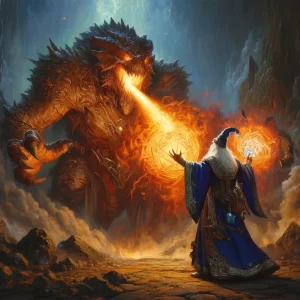
Nobility and governance have been enduring aspects of many human societies, often distinguishing individuals based on birthright, deeds, or bestowed titles. This article delves into the intricate hierarchical system of titles and responsibilities within a hypothetical nobility structure, which may also serve as an allegory for historical and modern power dynamics.
Nobility: The Structural Overview
The Fundamentals
At the core, the title of a "Noble" is conferred to individuals ruling over a dominion, generally via a grant from a royal authority. This hierarchical system includes both masculine and feminine titles, such as Baron (Baroness) or Duke (Duchess). Importantly, titles are cumulative; for example, a King could simultaneously hold the titles of Duke, Marquis, Count, Viscount, and Baron.
Titles and Their Implications
- Baron (Baroness): This is the ruler of a dominion called a "Barony," which must include at least one stronghold and a population to sustain it. Barons have the authority to appoint sub-rulers known as Seneschals.
- Viscount (Viscountess): A Viscount governs over two or more Baronies and may or may not continue to perform the duties of a Baron. Elevation from Viscount to Count only happens when a dominion is added by conquest.
- Count (Countess): A Count is essentially a Viscount who rules over at least three lesser dominions, known collectively as a "County." A Count has the authority to appoint Barons and Seneschals, and may elevate to Marquis through additional conquests.
- Marquis (Marquesa): This title is given to a Count who acquires additional dominions through conquest. They can be elevated to Duke by acquiring dominions through any method, and they can appoint Barons and Seneschals.
- Duke (Duchess): A Duke rules over a "Duchy" and can appoint rulers of all lesser titles, given that they meet the dominion requirements.
Note: Acquiring the qualifications for a title does not automatically confer it; one must be officially granted the title by a higher authority.
The Concept of Royalty
Who Are the Royals?
Royalty refers exclusively to Kings and their families. They hold the prerogative to grant titles of nobility. Lesser rulers are restricted to appointing Seneschals unless explicitly given permission by a royal ruler.
Special Cases
- Conquest Awards: Royals may award a title based on acts of bravery and exceptional leadership in defending the dominion during war.
- Archduke: This title refers to a Duke who is related to a King or Emperor and rules a "Grand Duchy." It can also be conferred upon an independent Duke joining an empire, albeit rarely.
- Prince (Princess): These are children of a King or Emperor. They usually hold the title of Baron and rule a "Principality." They cannot grant titles unless they also rule a dominion.
- Crown and Imperial Princes: These are heirs apparent to a Kingdom or Empire, respectively.
- King (Queen): Rules a large dominion called a "Kingdom," consisting of various lesser dominions governed by lower-ranking rulers.
- Emperor (Empress): Ruler of an "Empire," comprising several independent dominions each led by a King, Queen, Archduke, or other rulers.
Formal Address and Etiquette
Different titles require various forms of address in social settings:
- Baron to Marquis: "Your Lordship"
- Duke or Archduke: "Your Grace"
- Prince: "Your Highness"
- Crown Prince or Imperial Prince: "Your Royal Highness"
- King: "Your Majesty"
- Emperor: "Your Imperial Majesty"
Alternative Systems of Governance
- Confederacy: A group of independent dominions united.
- Democracy: Rule by the populace, either directly or via elected officials.
- Dictatorship: Single leader rule, devoid of nobility or royalty.
- Feodality: Loyalty-based hierarchical system.
- Magocracy: Ruled by magic-users.
- Militocracy: Ruled by military leaders.
- Monarchy: Rule by an inherited leader.
- Oligarchy: Rule by multiple leaders of equal standing.
- Republic: A democracy with elected officials.
- Theocracy: Rule by religious clerics.
The intricate structure of nobility and governance often reflects complex social, political, and historical contexts. Though this analysis is hypothetical, it echoes the essence of many systems that have existed throughout human history, offering insights into the dynamics of power, authority, and social stratification.






